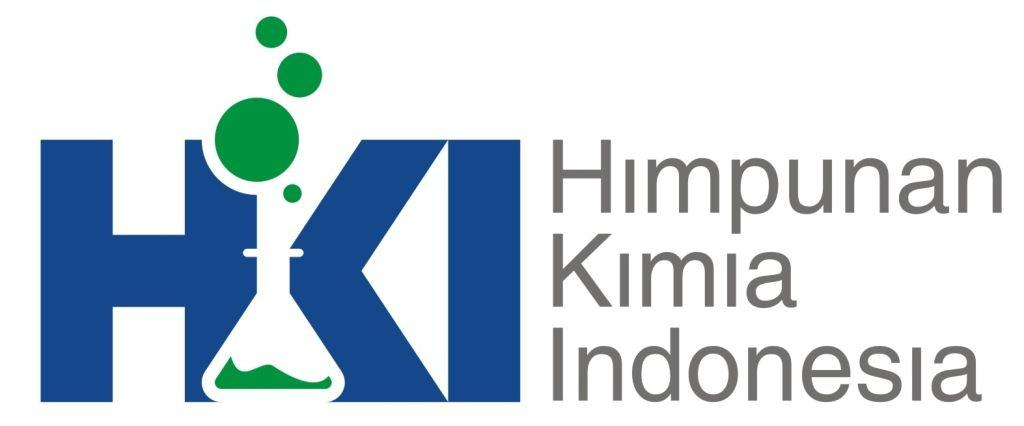Modification of Glassy Carbon Electrodes on Starch-Based for Detection of Chromium Hexavalent
Abstract
The purpose of this study was to study the effect of the percentage of the addition of conductivity material in phosphorylation starch to modify GCE (glassy carbon electrode) for detection of Cr(VI). In this study, the technique used is DPV (Differential Pulse Voltammetry). The conductivity material used in this study is activated carbon and Fe3O4 nanoparticles. The method used is an optimization of conductivity material in phosphorylation starch and determination of the performance of the obtained sensor. The optimum percentage of conductivity materials, both activated carbon and Fe3O4 nanoparticles, in the phosphorylation starch matrix is 5%. The form of amorphous activated carbon and the structure trigonal of Fe3O4 nanoparticles affects the current of Cr(VI). The addition of conductive material increases the current of Cr(VI) and shifts the peak potential to the left. The performance of PSC1 sensor is a detection limit of 5,09 ppm and sensitivity of 0,2098 ppm/µA in the linear concentration range of 2,6 – 15,6 ppm. However, the performance of PSN1 sensor is the detection limit of 3,48 ppm and sensitivity of 0,2120 ppm/µA in the linear concentration range of 2,6 – 18,2 ppm.
Keywords
References
Andawiyah R., Mulyasuryani, A., & Sulistyarti, H. (2020). Voltammetric Determination of Paracetamol using Polyvinyl Alcohol (PVA)-Fe3O4 Modified Glassy Carbon Electrode. IOP Conference Series: Materials Science and Engineering, 833(1). https://doi.org/10.1088/1757-899X/833/1/012059
Cuéllar, M., Pfaffen, V., & Ortiz, P. I. (2016). Application of multi-factorial experimental design to successfully model and optimize inorganic chromium speciation by square wave voltammetry. Journal of Electroanalytical Chemistry, 765, 37–44. https://doi.org/10.1016/j.jelechem.2015.07.050
Dong, H., & Vasanthan, T. (2020). Effect of phosphorylation techniques on structural, thermal, and pasting properties of pulse starches in comparison with corn starch. Food Hydrocolloids, 109(April), 106078. https://doi.org/10.1016/j.foodhyd.2020.106078
Filik, H., & Avan, A. A. (2019). Dextran modified magnetic nanoparticles based solid phase extraction coupled with linear sweep voltammetry for the speciation of Cr(VI) and Cr(III) in tea, coffee, and mineral water samples. Food Chemistry, 292(March), 151–159. https://doi.org/10.1016/j.foodchem.2019.04.058
Herawati, H. (2016). Potensi Pengembangan Produk Pati Tahan Cerna sebagai Pangan Fungsional. Jurnal Litbang Pertanian, 30(1), 31–39. https://doi.org/10.21082/jp3.v30n1.2011.p31-39
Koncar, V. (2019). Smart textiles for monitoring and measurement applications. In Smart Textiles for In Situ Monitoring of Composites. Elsevier Ltd. https://doi.org/10.1016/b978-0-08-102308-2.00001-2
Le Van, K., & Luong Thi, T. T. (2014). Activated carbon derived from rice husk by NaOH activation and its application in supercapacitor. Progress in Natural Science: Materials International, 24(3), 191–198. https://doi.org/10.1016/j.pnsc.2014.05.012
Mulyasuryani, A., Tjahjanto, R. T., & Andawiyah, R. (2019). Simultaneous voltammetric detection of acetaminophen and caffeine base on cassava starch-Fe3O4 nanoparticles modified glassy carbon electrode. Chemosensors, 7(4). https://doi.org/10.3390/chemosensors7040049
Pai, S., Kini, S. M., Narasimhan, M. K., Pugazhendhi, A., & Selvaraj, R. (2021). Structural characterization and adsorptive ability of green synthesized Fe3O4 nanoparticles to remove Acid blue 113 dye. Surfaces and Interfaces, 23(August 2020), 100947. https://doi.org/10.1016/j.surfin.2021.100947
Riyanto, C. A., Ampri, M. S., & Martono, Y. (2020). Synthesis and Characterization of Nano Activated Carbon from Annatto Peels (Bixa orellana L.) Viewed from Temperature Activation and Impregnation Ratio of H3PO4. EKSAKTA: Journal of Sciences and Data Analysis, May, 44–50. https://doi.org/10.20885/eksakta.vol1.iss1.art7
Rossel, R. A. V., McBratney, A. B., & Minasy, B. (2010). Proximal Soil Sensing. Springer.
Sechi, N. D. S. M., & Patricia Teixeira Marques. (2017). Preparation and physicochemical, structural and morphological characterization of phosphorylated starch. Materials Research, 20, 174–180. https://doi.org/10.1590/1980-5373-MR-2016-1008
Th Hue, N., Van Hop, N., Thai Long, H., Hai Phong, N., Uyen, T. H., Quoc Hung, L., & Nhi Phuong, N. (2020). Determination of Chromium in Natural Water by Adsorptive Stripping Voltammetry Using in Situ Bismuth Film Electrode. Journal of Environmental and Public Health, 2020. https://doi.org/10.1155/2020/1347836
Tu, J., Gan, Y., Liang, T., Wan, H., & Wang, P. (2018). A miniaturized electrochemical system for high sensitive determination of chromium(VI) by screen-printed carbon electrode with gold nanoparticles modification. Sensors & Actuators: B. Chemical.
Wang, L., Ji, H., Wang, S., Kong, L., Jiang, X., & Yang, G. (2013). Preparation of Fe3O4 with high specific surface area and improved capacitance as a supercapacitor. Nanoscale, 5(9), 3793–3799. https://doi.org/10.1039/c3nr00256j
Wiryawan, A., Suntari, R., Kusuma, Z., Retnowati, R., & Burhan, Ryp. (2018). Method of analysis for determination of the chromium (Cr) species in water samples by spectrophotometry with diphenylcarbazide. Journal of Environmental Engineering and Sustainable Technology, 5(01), 37–46.
Xu, H., Gao, B., Cao, H., Chen, X., Yu, L., Wu, K., Sun, L., Peng, X., & Fu, J. (2014). Nanoporous Activated Carbon Derived from Rice Husk for High Performance Supercapacitor. Journal of Nanomaterials, 2014, 1–8.
Xu, Y., Zhang, W., Huang, X., Shi, J., Zou, X., Li, Z., & Cui, X. (2019). Adsorptive stripping voltammetry determination of hexavalent chromium by a pyridine functionalized gold nanoparticles/three-dimensional graphene electrode. Microchemical Journal.
Yasser, M., & Widiyanti, S. E. (2019). Pengaruh Waktu terhadap Kestabilan Nanopartikel Emas yang Disintesis Menggunakan Ekstrak Air Daun Jati (Tectona Grandis) Termodifikasi Mercaptopropionic Acid (MPA). INTEK: Jurnal Penelitian, 6(1), 41. https://doi.org/10.31963/intek.v6i1.1123
Yi, E., Teo, L., Muniandy, L., Ng, E., & Adam, F. (2016). High surface area activated carbon from rice husk as a high performance supercapacitor electrode. Electrochimica Acta, 192(January), 110–119. https://doi.org/10.1016/j.electacta.2016.01.140
DOI: 10.15408/jkv.v8i2.24891
Refbacks
- There are currently no refbacks.
Copyright (c) 2022 Asnaili Alfi Nurillah, Ani Mulyasuryani, Hermin Sulistyarti

This work is licensed under a Creative Commons Attribution-ShareAlike 4.0 International License.

